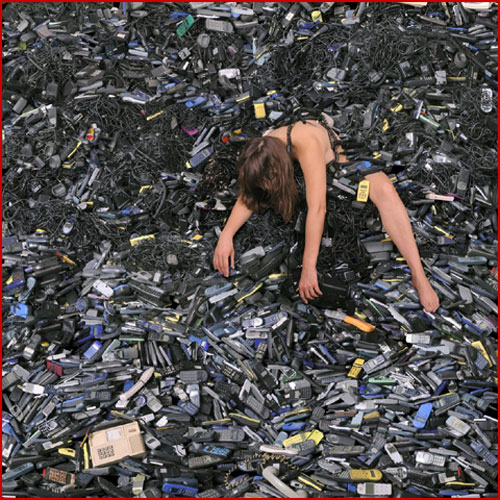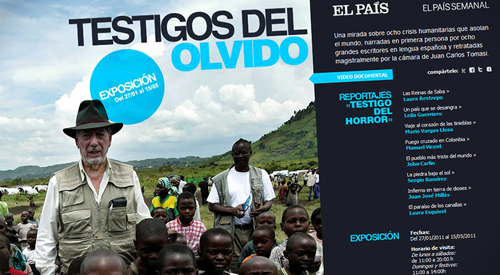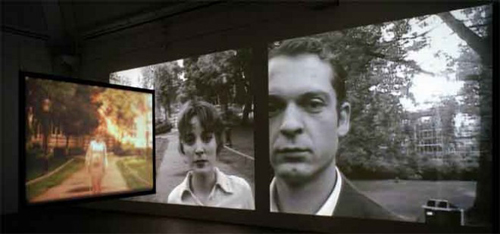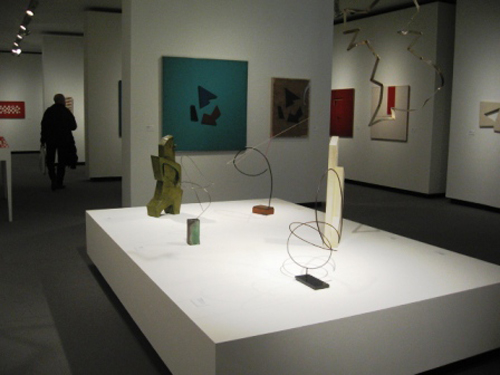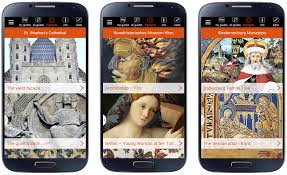The Only Team
The Prado Museum is one of the most important museums not only in Spain but in all of Europe because of its extensive collection of great artists that it has.
The Only Team
The Naval Museum of Madrid runs through the naval history of Spain from the year 1474 up until the present and it shows the most important pieces.
The Only Team
Rastro is the most famous market in Madrid, visited every Sunday by thousands of people. You will find clothes, paintings, antiques and more.
Mónica Boixeda
Text about the current exhibition by Daniel Canogar, one of the Spanish artists with more international projection in the city of Madrid, particularly his huge Travesias installation, which can be seen in the exhibition hall of the Canal de Isabel II until next May 15.
Mónica Boixeda
As part of a cycle which starts on the 29th May at the Centro 2 de Mayo (CA2M), in association with the Centro socio-cultural Joan Miró de Móstoles and the Instituto Goethe, there will be screenings from the Show of German Cinema. German cinema has always been known as more a form of art than entertainment. The first currents of German cinematography developed from the expressionist vanguard of the first half of the 20th century, which had strong ideological and aesthetic roots in the bridge collective, which called upon the new generation of creators to strive for the “freedom of living and acting in the face of traditional forces.” Expressionism transmitted the complexities of the port-war world, and was primarily critical of materialism. In the 1960s, the economy of a Germany occupied by North American forces would have a strong impact on the arts – which since the beginning of the Second World War had been stagnant, due to a large number of the country´s artists fleeing at the outbreak of war. Up until the 1960s, German cinema had been victim to propaganda, and an aesthetic based on the North American presence, whose politics left little room for an interest in the arts. The arrival of television imprinted a visual aesthetic in line with the North American establishment. This led to an uprising from students of literature and cinema, who saw in the short film a platform for developing the culture of German cinematography. The Oberhausen Manifesto declared the birth of new German cinema, and a new visual and poetic language without atavistic enclaves, or rejection of technique and...
Mónica Boixeda
Walking down Alcalá street is like walking into the heart of Madrid. It is like a rule – anybody visiting the city has to take a stroll down one of the most beautiful, iconic and oldest roads in Madrid, born in the Puerta del Sol. In the 1940s, it was a tradition for anybody who visited Madrid to be photographed on this street, as symbol of having truly arrived in the city. And even today, it´s hard not to be taken in by the atmosphere of the place. For madrileños and other Spaniards, it is the place of all those films in the 1960s, with the Seat 600 cars zooming down Puerta de Alcalá. People visiting for the first time are not only surprised by the beauty of the buildings and monuments (the Post Office building, the Linares Palace, etc), but also its well-preserved, lined with trees and flowers. At number 49 of the street, by the metro station Banco de España, is the central headquarters of the Cervantes Institute. The public institute was founded in 1991 for the promotion and teaching of the Spanish language, and the Spanish and Hispanic-American cultures. As well as the other headquarters in Alcalá de Henares (Madrid), birthplace of writer Miguel de Cervantes, there Institutes in all five continents. One of the Cervantes Institute´s objectives is to organise activities of cultural involvement with other Spanish organisations – such the collaboration with charity group Médicos sin Fronteras (“Doctors without borders“) and newspaper El País for the photographic exhibition “Testigos del olvido”. The testimonies of eight great writers are told, in Spanish, about different conflicts...
Mónica Boixeda
CaixaForum in Madrid The Cinema Effect: Illusion, Reality and Moving Pictures until April 24. The exhibition is an interesting review of the influence that cinema has had in shaping the 21st century visual culture. The exhibition is organized by the Hirshhorn Museum and Sculpture Garden of the Smithsonian Institution in Washington, with support from the Broad Art Foundation and the Audrey and Sydney Irmas Charitable Foundation. Cinema is in our unconsciousness through images and social representations constructed in the contemporary imagination. Along with advancing the technique to produce and play movies and documentaries using computers and televisions, video art work is increasingly popular and invites us to project ideas via the image. Illusion and reality intersect in the sample and the ones who call to decode these two proposals are international artists Isaac Julien, Omer Fast, Runa Islam, Ian Charlesworth, Ferry Tribe, Mungo Thomson, Julian Rosenfeldt and Paul Chan. They summon us to discover the reality of their dysfunctional compositions which communicate us with the unconscious construction of images: dreams. The filmmaker Isaac Julien, born in London in 1960, in his complex works on the search for racial and sexual identity in a world dominated by the stereotypical image of beauty, correctness and everyday life, has done interesting video art works where he plays with dreamworld poet that treats mediation on the cultural impact of global migration. Runa Islam, a filmmaker born in Bangladesh in 1970, inspired her documentary video art work in avant-garde Franco-Swiss filmmaker Jean-Luc Godard, one of the most influential representatives of the Nouvelle Vague, the critical and poetic acidity of his images. His films have...
Mónica Boixeda
In the last two years, the football league in Spain – which is one of the three champions of the world – has been determined in the Spring, at the stadium Santiago Bernabéu, with the classic match between Real Madrid and FC Barcelona – the two best teams in the world. In spite of the fact that since Pep Guardiola took over the Catalan team in 2008, the football of Barcelona has turned into the worldwide benchmark for the sport, as it continues to break records and gain new titles – in the last two editions of the League, the game has only been won in the second half when at the Madrid stadium. This just proves not only the Madrid competitive streak – who are unable to give over a defeat until right at the last minute – but also the all-round quality of the team, which is full of international figures who have just been unlucky enough to come up against one of the most memorable and formidable line-ups in history. Indeed, it seems an indisputable fact that Barcelona under Guardiola has reached an unforgettable level in the history of football, up there with the Madrid under Di Stefano or Milan under Arrigo Sacchi – the stuff of legends. It´s not unusual to hear Barcelona being referred to as the best team of all time – a label which arose from games such the one in the first round of the League against Madrid at Camp Nou, their brilliant home stadium. A fired up Barcelona whipped their opponents with a deserved 5-0 score, which has gone down...
Mónica Boixeda
Until May 15 the exhibition Cold America. Latin American geometric abstraction, 1934-1973 is presented at the Juan March Foundation in Madrid. The exhibition is organized around 300 works and seeks to establish new parameters in the history of Latin American geometric abstraction, highlighting the particularities and differences it has with this artistic movement in Europe. Comprised of paintings, sculptures, architecture and photography from Argentina, Brazil, Colombia, Cuba, Mexico, Uruguay and Venezuela, the simple is chronologically framed in the return of Joaquin Torres Garcia to Uruguay (1934) and the return of Jesús Rafael Soto (1973) to Venezuela for the opening of the Ciudad Bolivar Museum. The geometric abstraction has its roots in the Kasimir Malevich’s suprematism, the Piet Mondrian’s neoplasticism and Wassily Kandinsky’s avant-garde. It is described as a stream of abstract art that emerged in response to Impressionism, striving for objectivity and universality that the geometric mean. One of the drivers of geometric abstraction in Latin America was Joaquín Torres García. He was born in Montevideo in 1874. At 17, he traveled to Spain to finish school in the town of Mataró, where his father´s family lived. He studied at the School of Fine Arts in Barcelona where he was influenced by French Impressionism. His connection with the stream of geometric abstraction occurred in Paris, where he was invited to participate in the group who frequented Piet Mondrian and joined the Cercle et Carré. Torres Garcia brings the logic in the composition and the inclusion of symbolic figures to the group. In 1934 he returned to Uruguay and joined the elite of art, driving forward the avant-garde thinking. He...
Mónica Boixeda
Definitely, the twenty-first century seems to be changing appreciably the chances of appreciating art, regardless of our ability to move geographically or in the spot in the world where we reside. On one hand, the brand new Art of Google Project enables to explore museums around the world, -it’s intriguing indeed the absence of institutions like the Louvre, the Pompidou and the Prado museum- and view hundreds of artworks through a zoom with a stunning resolution similar to that with which art restorers work (it offers, using a tool by Spanish company Madpixel that photographs each frame synchronized to the nearest millimeter, an image of 14,000 million pixels, a thousand times more detail than detail provided by a normal camera) and create and share on the network our own collection of masterworks. On the other hand, the phenomenon being favored by the economic crisis, it is increasingly common for major museums around the world to take advantage of the time period during which their buildings are being renovated to host tours of their most representative works, getting big change and economic benefits offering in turn the possibility to show them, sometimes even thousands of miles away. This is the case of the National Museum of Catalan Art (MNAC) which, in exchange for 900,000 euros and a commitment to fund a research program that includes the digitization of the museum funds, has used its prestigious Romanesque rooms are temporarily closed to move the parts normally exposed to the elegant mansion where the Fundation Mapfre showroom has at Paseo de Recoletos, number 23 in Madrid until May 15. This is an...

 English
English Français
Français Deutsch
Deutsch Italiano
Italiano Español
Español